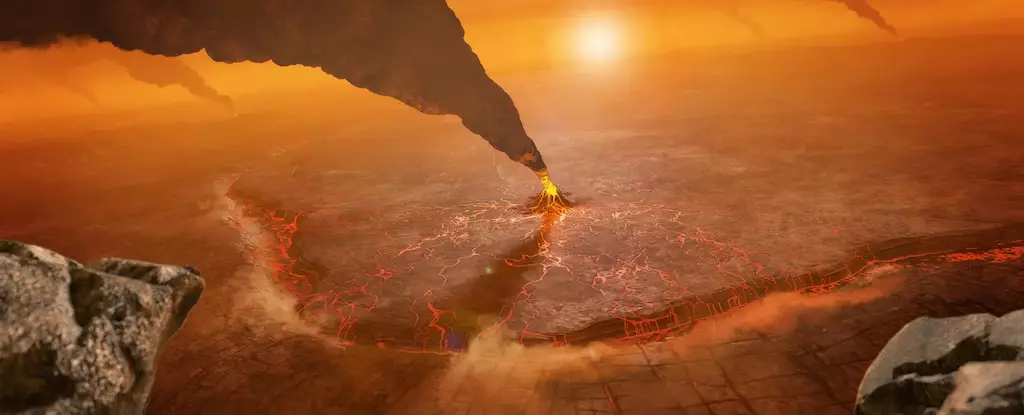Recent findings from a comprehensive study of archival data have challenged long-held assumptions about Venus, revealing that this enigmatic planet may share more geological traits with Earth than previously believed. The research indicates that Venus is not merely an astrological curiosity, but a dynamic and evolving world exhibiting signs of internal geological processes akin to tectonics.
This groundbreaking information stems from a thorough analysis of coronae, large, circular surface features that have puzzled scientists since their discovery. Traditionally considered volcanically-influenced structures, these features may hold the keys to understanding Venus’s geological history and active processes occurring beneath its seemingly harsh surface. According to Gael Cascioli of the University of Maryland, “Coronae are not found on Earth today; however, they may have existed when our planet was young and before plate tectonics had been established.”
The Mystery Behind Coronae
The study reveals that coronae are not mere craters but are likely formed by hot, molten material bubbling up from Venus’s interior. This hot material expands, deforming the surface into a dome shape before cooling and collapsing. The resulting ring-like appearance, accompanied by fractures radiating outwards, mirrors the behavior seen in volcanic activity on Earth. However, unlike our home planet, these molten ascent processes exist without the familiar tectonic plates.
Despite the absence of tectonic plates, Venus’s surface provides ample evidence of internal activity through deformations — the very traits that comprise its coronae. Researchers speculate that interactions involving mantle plumes and the lithosphere, the upper layer of the mantle, result in ongoing geological phenomena. Such activities challenge the notion of a geologically dormant planet, prompting scientists to reevaluate Venus’s dynamic capabilities.
Research Methodology Ignites New Insights
Using the data collected by NASA’s Magellan probe in the 1990s, researchers engaged in a rigorous modeling exercise. They identified 75 coronae, leveraging gravity and topography data to glean insights into the subsurface processes bellying these formations. Remarkably, they discovered that at least 52 of the identified coronae are underpinned by hot, buoyant mantle plumes. This finding is tantalizing, suggesting that these plumes drive movements comparable to Earth’s geological activities.
What differentiates Venus from Earth is not a lack of activity but the unique manner in which geological processes manifest. Instead of the plate tectonics that govern our planet’s surface evolution, Venus might display a form of geological interaction termed lithospheric dripping and another distinct method resembling subduction. The concept of plastering the surface material outward, followed by its collision with adjacent structures leading to downward movement, illustrates a compelling narrative of Venusian geology that reflects both diversity and complexity.
Barriers to Exploration and Future Focus
While the findings are invigorating, exploring Venus presents a multitude of challenges. The planet’s oppressive atmospheric conditions — extreme temperatures, intense pressure, and corrosive acid rain — create substantial barriers to direct exploration. However, scientists see coronae as focal points for future missions, emphasizing their abundance and potential to shed light on the planet’s activity. “Coronae are abundant on Venus. They are very large features,” says Anna Gülcher from the University of Bern, reflecting the growing consensus on the need to prioritize studies centered on these geological phenomena.
This research embodies a significant shift in our comprehension of not only Venus but also the broader categorizations of geological activity beyond Earth. By delving into the complexities of coronae, scientists can collect crucial data about the inner workings of rocky planets and their evolutionary trajectories.
Implications for Planetary Science
The revelations gathered from studying Venus have far-reaching implications for planetary science. They suggest that understanding geological processes in extreme environments can provide insights into the formation and evolution of terrestrial worlds. This knowledge could refine models pertaining to other celestial bodies within our solar system and beyond, implying that potentially habitable environments may exist where we least expect them.
Moreover, Venus’s case highlights the necessity of reconsidering planetary differentiation and geological occurrence without the benchmarks established by Earth’s tectonic models. As our exploration technologies advance and allow us to decipher the secrets of other planets like Venus, we might find unexpected links and profound similarities hidden within these distant worlds. Just as coronae serve as windows into Venus’s geological soul, they illuminate broader truths about the dynamics of planetary systems at large.

